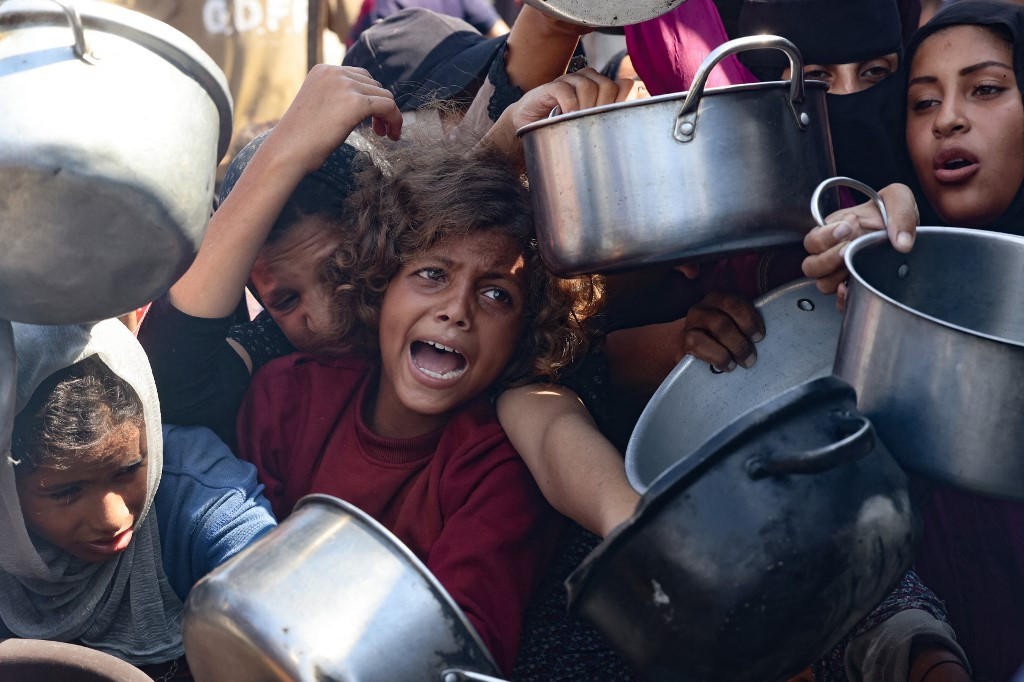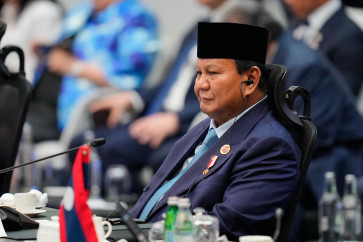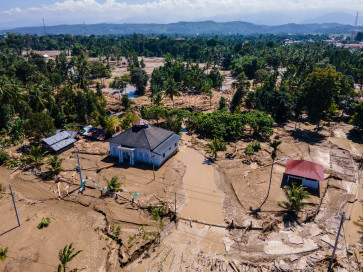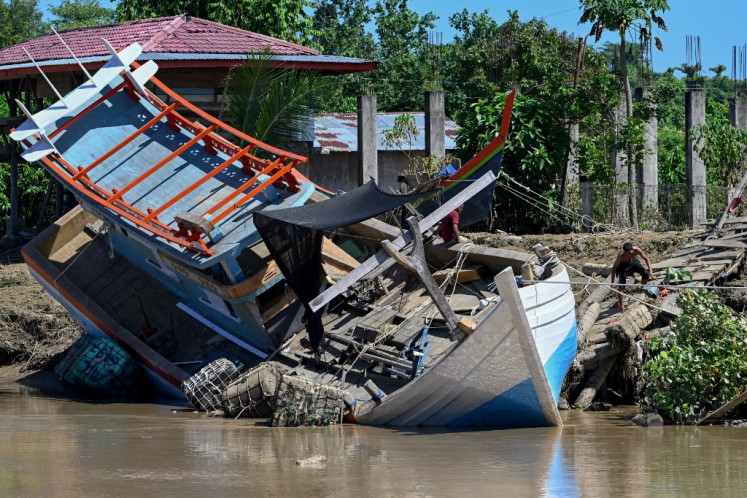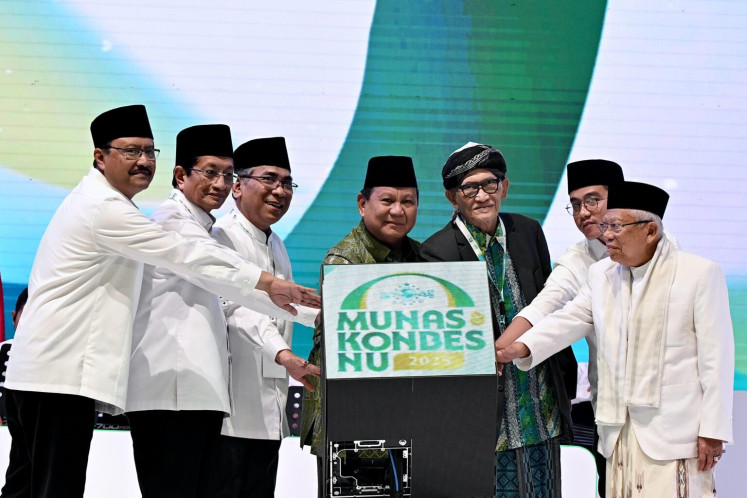Popular Reads
Top Results
Can't find what you're looking for?
View all search resultsPopular Reads
Top Results
Can't find what you're looking for?
View all search resultsPalestine: A brief history of a foreknown war of extermination
Israel's ongoing campaign in the Gaza Strip stems from decades of history dating back to the 1948 uprising, and is essentially a continuation of the Zionist regime's aim to eliminate the Palestinian presence between the sea and the river.
Change text size
Gift Premium Articles
to Anyone
T
he events unfolding in the Gaza Strip since Oct. 8, 2023, represent an extreme escalation of a foreknown campaign to eliminate the Palestinian presence between the sea and the river, at least in a political sense. In fact, this campaign began on the day the Zionist movement decided to establish an ethnic Jewish state in the region.
The trigger for this escalation was a violent and successful uprising by the besieged population of the Gaza Strip, which has been under a suffocating blockade since 2007. Around 80 percent of Gazans are descendants of the 1948 refugees who, according to the conditions of Israel’s admission to the United Nations, should have been allowed to return to their homes in 1949. It is a right that has been denied to this day.
During the uprising, which was itself legitimate given the circumstances, there were violent assaults against innocent civilians in violation of international law. These included killings, injuries, sexual assaults and kidnappings, even of children. While the International Criminal Court issued arrest warrants for those who initiated the action on suspicion of war crimes, many of them were subsequently killed by Israel.
Many signs indicate that within the upper ranks of the Zionist regime, some wanted and enabled this uprising to complete the campaign of elimination, which peaked around 1948-1949. At that time, a vast territory between the sea and the river was cleansed of Palestinians, including more than 500 villages.
The methods used in 1948 included intimidation through spreading rumors and committing war crimes, such as the execution of civilians, acts of rape and local massacres. The aim was to terrorize the population into fleeing, which is what happened. Around 700,000 Palestinians fled or were expelled, and were not allowed to return to the territory recognized today as the state of Israel.
Over the years, the methods of ethnic cleansing were refined and included a legal arm of the regime that used legal pretexts to confiscate Palestinian lands. These methods did not cause the disappearance of Palestinians but did reduce the territory belonging to them under Israeli law. The expulsions in 1967 were an exception to this approach, though they were on a much smaller scale than in 1948-1950.
By 2023, at the time of the Gaza uprising, more Palestinians than Jews were living between the sea and the river. For Zionists who opposed partition, this demographic situation had no sustainable solution. An apartheid regime was imposed as a temporary measure, and it was clear the regime was awaiting an opportunity to expel as many Palestinians as possible.
There were likely figures in the government who prepared the ground for the Gaza incursion. By eliminating many of the captives under the Hannibal Directive, the regime’s propaganda machine was then turned against Hamas, blaming it for many atrocities, some of which never occurred.
A series of Zionist leaders blurred any distinction between Hamas and the civilians of the Gaza Strip, including children, with the explicit goal of justifying the completion of the campaign against Palestinians in the Gaza Strip. Since Oct. 8, 2023, Israel has been conducting a campaign without any moral restrictions, except those necessary to prevent the collapse of the Zionist regime under external pressure.
At present, the campaign continues. There was an attempt to expel all Palestinians from the Gaza Strip into Sinai or other countries. The Egyptians immediately blocked the first option, and no realistic second option has been found. As a result, the campaign has continued much longer than the ideologues in this government, Bezalel Smotrich and Itamar Ben-Gvir, intended.
The crimes against humanity committed in this campaign include actions that still have no agreed-upon names, such as urbanicide (the destruction of urban infrastructure), healthicide (the destruction of medical infrastructure and mass killing of medical workers), humanitarian-cide (the massacre of aid workers), scholasticide (the destruction of the education system and the deliberate killing of teachers) and mediacide (the deliberate killing of journalists to prevent the flow of information).
Most of these serious crimes, which international humanitarian organizations regard as genocide, were carried out to force Gazan citizens to migrate to other countries. The primary victims were civilians. According to secret data from Israeli military intelligence, more than 83 percent of those killed were civilians, with no evidence of their affiliation with any of the fighting organizations. This data serves as clear proof of the nature of this campaign.
At this stage, the Zionist regime has not yet given up on eliminating the Palestinian presence in the Gaza Strip by dispersing the population to other countries, perhaps by bribing impoverished nations. For now, this is not happening, and pressure on the Zionist regime is increasing, but it still does not threaten the regime’s survival.
In parallel with the campaign in the Gaza Strip, as part of the broader effort against Palestinians between the sea and the river, the Zionist regime uses ideological justifications rooted in Jewish supremacy to reduce Palestinian-held areas in the West Bank and East Jerusalem. It also brutally oppresses the 1967 refugees in the West Bank and encourages the voluntary departure of Palestinian citizens of Israel by deliberately ignoring crime in Palestinian society, much of which originates with criminal organizations collaborating with the Zionist regime.
The hottest issue on the table of decision-makers in the framework of this general campaign focuses on the fate of Gaza City, which is slated for flattening, with the exile of all its remaining residents to southern Gaza on the way to third countries.
Humanity, especially its representatives, has so far created no situation that truly threatens the regime’s survival. Therefore, there is no present necessity for the Zionist regime to stop the campaign. It can, and wants to, continue its actions against the Palestinians between the sea and the river, at a changing pace according to the intensity of global criticism.
***
The writer is an Israeli human rights activist.

